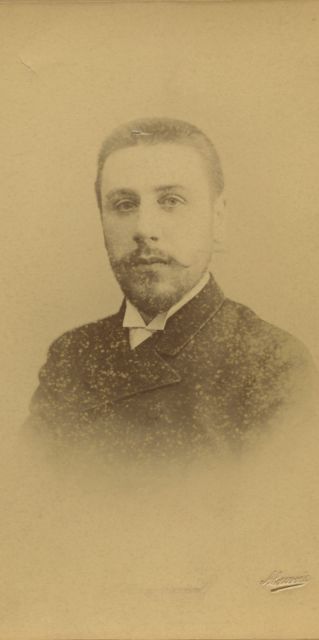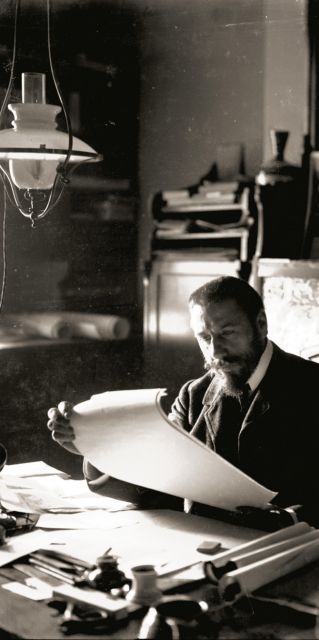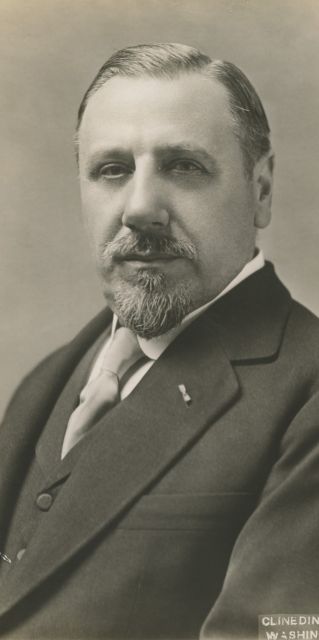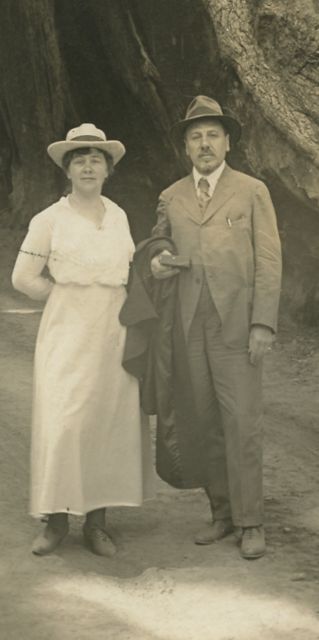Biography
1861
6 January: Victor Horta born in Ghent, the son of a shoemaker.
1873
Enrolled in the school of architecture at the Académie des Beaux-Arts in Ghent. Continued to attend the Athénée Royal in the same city from 1874 to 1877.
1878
Left for Paris, where he entered the studio of the interior designer Jules Debuysson. "My stay in Paris, walking the city streets, visiting the monuments and museums threw wide open the windows of my artistic soul. No school could have done more to tire me with an enthusiasm for architecture than viewing and deciphering those monuments - an enthusiasm that has never left me." (Mémoires, p.8)
1880
13 June: death of Horta's father. The young Horta returns to Belgium.
1881
His first marriage and the move to Brussels, where he enrolled at the Académie Royale des Beaux-Arts. Began training under Balat (Leopold II 's favourite architect, the designer of, among other things, the Musées Royaux des Beaux-Arts in the Rue de la Régence in Brussels and the royal greenhouses in Laeken).
1884
Winner of the Godecharle prize for architecture with his plans for a new parliament building.
1885
Designed three houses in the Twaalfkamerenstraat in Ghent.
1887
Winner of the triennial competition organised by the Brussels Académie des Beaux-Arts for its former students with his project for a natural history museum building.
1889
Visited the Great Exhibition in Paris (Eiffel Tower, Galerie des Machines). Thanks to Balat, commissioned to design a pavilion to house Jef Lambeaux's sculpture "Les Passions humaines" (Human Passions).
1890
Simone Horta born. The Matyn house, 50 Rue de Bordeaux in SaintGilles, Brussels.
1892
Appointed professor in the Faculty of Applied Sciences at the Université Libre de Bruxelles, a post he resigned in 1911.
1893
The Autrique house, 286 Chaussée de Haecht in Schaerbeek, Brussels. The Tassel house, 6 Rue Paul-Emile Janson in Brussels.
1894
Became president of the Société Centrale d'Architecture de Belgique. The Frison house, 37 Rue Lebeau in Brussels. The Solvay mansion, 224 Avenue Louise in Brussels.
1895
The Van Eetvelde mansion, 4 Avenue Palmerston in Brussels (extended in 1898-1901). The 'Maison du Peuple', Place E. Vandervelde in Brussels (demolished in 1965-1966). The kindergarten, 40 Rue Saint-Ghislain in Brussels. The Deprez-Van de Velde mansion, 3 Avenue Palmerston in Brussels.
1898
House and studio, 23-25 Rue Américaine in Saint-Gilles (which became the Horta museum in 1969).
1899
The Aubecq mansion, 520 Avenue Louise in Brussels (demolished in 1950). The Carpentier house in Ronse.
1900
The 'A l'Innovation' store, Rue Neuve in Brussels (destroyed by fire in 1968).
1901
The Roger mansion 459 Avenue Louise in Brussels (completely transformed). The Dubois house, 80 Avenue Brugmann in Forest, Brussels. The Braecke house, 31 Rue de l'Abdication in Brussels.
1902
The Max Hallet mansion, 346 Avenue Louise in Brussels.
1903
The Musée des Beaux-Arts in Tournai (completed in 1928). The Anspach store, Rue Grétry in Brussels (since demolished). The 'Grand Bazar Anspach' in Frankfurt-am-Main (since demolished).
1906
Horta divorced from his first wife. The Waucquez store, 20 Rue des Sables in Brussels (Belgian Centre for Strip Cartoons). The Brugmann hospital in Jette (completed in 1923).
1908
Second marriage, to a Swede, Julia Carlsson.
1909
The Wolfers store, 11-13 Rue d'Arenberg in Brussels.
1912
Horta is given the task of reorganising the courses at the Académie des Beaux-Arts in Brussels.
1913
Appointed director of this same Academy for a period of three years.
1916
Attended the 'Reconstruction of Belgium' congress in London. The German authorities learnt of his journey. Unable to return home, Horta went to America, where he remained until January 1919.
1919
Sold his house and studio in the Rue Américaine. Drew the first plans for the Palais des Beaux-Arts in Brussels (inaugurated in 1928).
Appointed professor at the Hoger Instituut voor Schone Kunsten in Antwerp.
1925
Architect of Belgium's 'Pavillon d'honneur' at the International Exhibition of Modern Decorative and Industrial Arts in Paris. Appointed director of the Fine Arts section of the Académie Royale de Belgique.
1932
Horta made a baron.
1937
Final plans for the Central Station in Brussels.
1939
Began writing his Mémoires.
1945
Pulped part of his personal archives.
1947
Died on 8 September.



